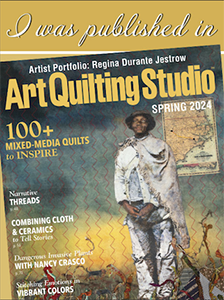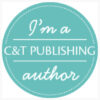Description
Transform treasured photographs into quilts to be displayed and passed down as heirlooms. Lesley Riley guides makers on successfully transferring vintage photos onto fabric using Transfer Artist Paper, custom printing, and more methods. Use the photo fabric to create an art quilt that honors and preserves the sentimental value of your photographs. A fresh and modern approach, Lesley’s quilt instruction focuses on using modern technology and storytelling techniques through photos, fabric choice, and embellishment. Follow along to design your photo memory quilt, from selecting your subject and sourcing photos, to digitally manipulating vintage photos and transferring the images to fabric.
-
Create engaging memory quilts using art principles, design concepts, and modern technology; including how to repair, enhance, and manipulate your photos to achieve the perfect images for your projects.
-
8 projects allow readers to try their hands at this updated art form, and a gallery of quilts by over 18 quilt artists shows a variety of inspiring stories.
Surface Design Association Review
As someone who loves photography, I was particularly excited and intrigued to read Lesley Riley’s new book, Photo Memory Quilts. I’ve been searching for ways to incorporate photos into my fiber artworks and Riley has been combining photos with her quilts for decades. “I tell visual stories”, writes Riley. “They are my personal response to history. A memory, no matter how recent, is history…”
Riley believes that a memory can be personal, a reaction to local or global events, an homage, or a rumination that veers from fact into fantasy. When such responses are put into her art, Riley believes they qualify as memory quilts. Embracing such an expansive definition of memory gives artists great freedom to visually paraphrase a memory, concept or narrative.
Riley’s book provides both a practical and creative framework for designing photo-based memory quilts and it begins with photography considerations. Riley discusses copyright and provides an expert image transfer technique overview. She also goes through some technical but creative elements of photography, such as cropping and photo correction. It’s important to point out that Riley debunks the assumption that artists need expensive camera equipment for this process; she uses images taken with her iPhone and offers instructions based on handheld devices. Don’t skip or skim these chapters because Riley shares some great tricks and tools to help you achieve your desired results. For example, I was surprised to learn there’s an app that can transform a portrait, adding a smile to the subject’s face where there might have been a stern look before. There are lots of before and after pictures to illustrate this tip and others. I do wish there was the option to get this book with a spiral binding so it would lie flat as I use it for future reference, but I concede it looks much better as is.
Though I’ve never taken a class with Riley, I have had the privilege of learning from her in conversation, and have come to know she openly shares her knowledge and offers encouragement. This spirit of generosity is evident throughout the book. (She also created this narrated clip to describe a few of the photos and ideas of her book in greater detail.) I found her teaching style particularly impactful when she discusses the creative process—offering suggestions and insights for developing individual styles, both in general and as they pertain to memory quilts. Riley urges artists not to aim for perfection or literal depictions of a memory and instead, to allow their emotions to be their guide. “Go for your best. But don’t try to be perfect… It always has been and always will be out of reach”, she writes. Use whatever techniques and materials that speak to you and your concept. To help illustrate this, Riley walks readers through a variety of her own projects, sharing photos, thought-prompts, inspirations, and design decisions.
The works of eighteen other artists with myriad histories and memories to share can be found in a gallery section of the book. These memory quilts also help to demonstrate Riley’s thesis that anyone’s—and everyone’s—style is suited to creating memory quilts. These quilts, she believes, are an important part of our material culture. “What you make, matters”, the author argues.
Photo Memory Quilts can be used as a reference, a resource, and an inspiration. You’ll witness how Riley works as an artist and benefit from her wisdom and expertise as a teacher. Along the way, you’ll see lots of gorgeous photos and artworks that will likely spark a race to your cupboards and attics to discover treasures you’d like to add to your memory quilts. I’m looking forward to it myself.
–Vivien Zepf








